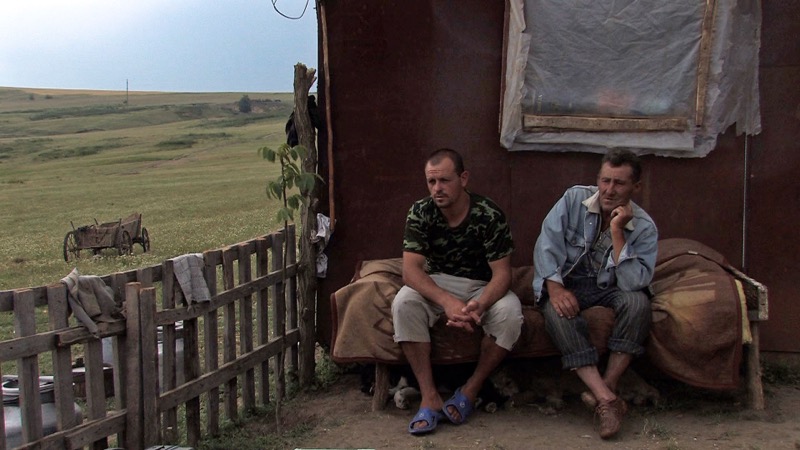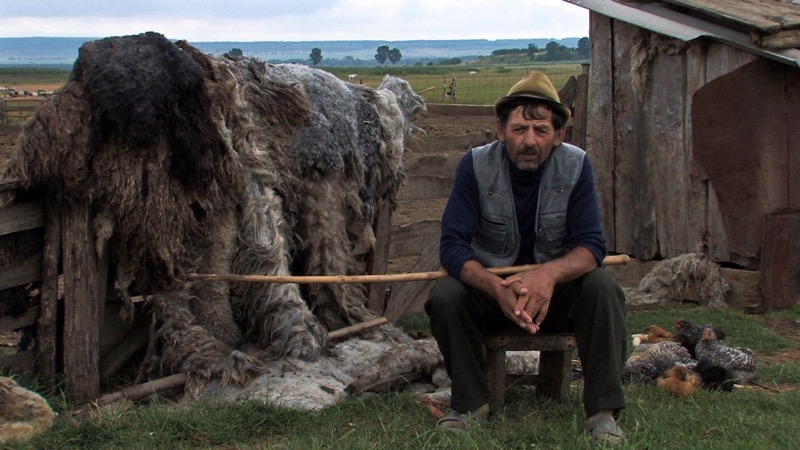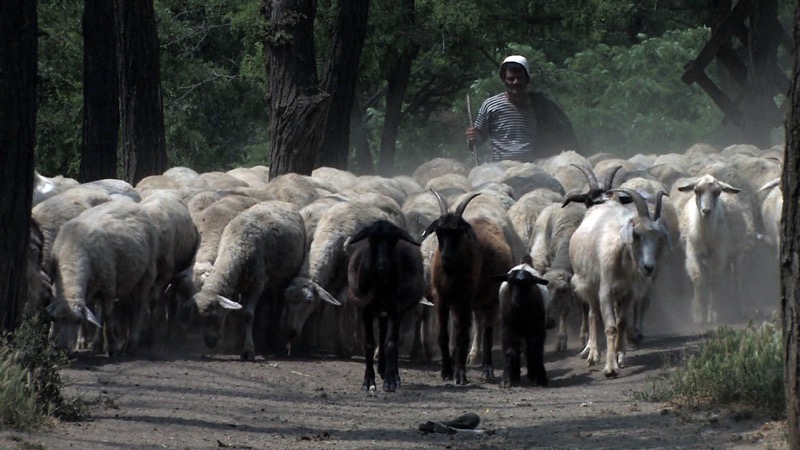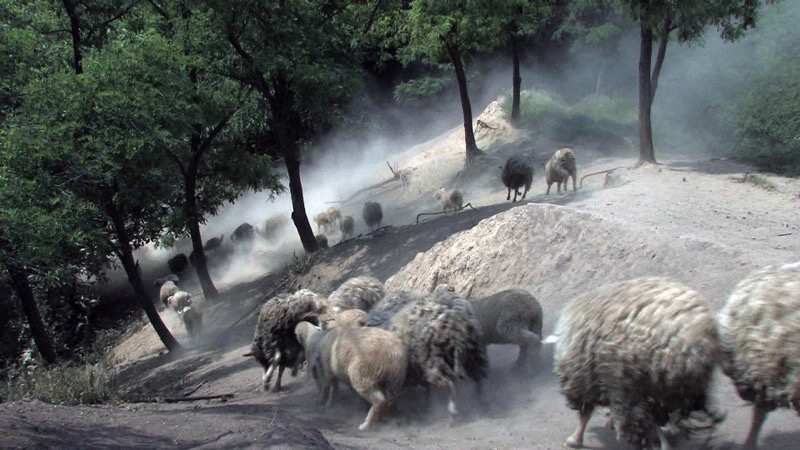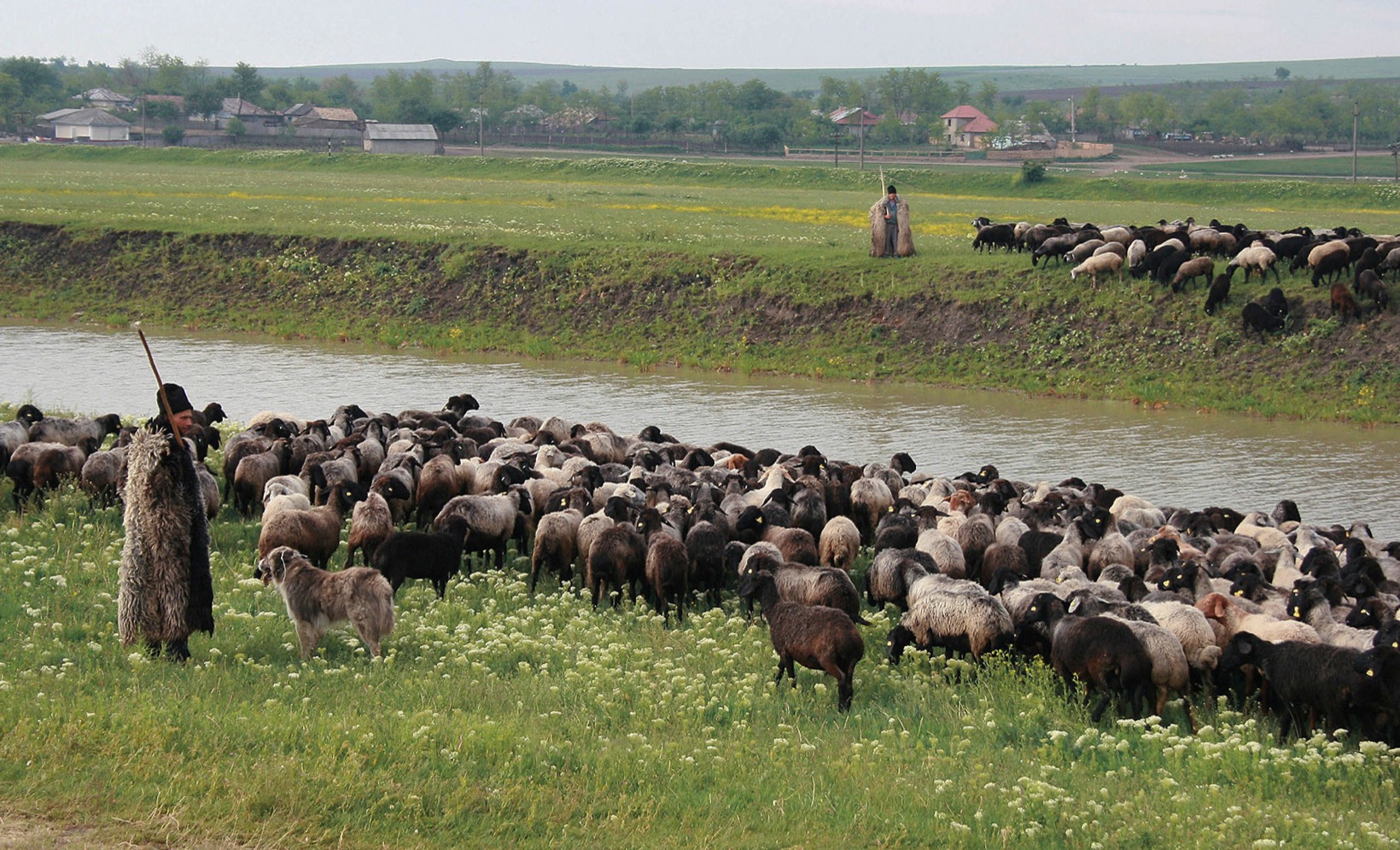
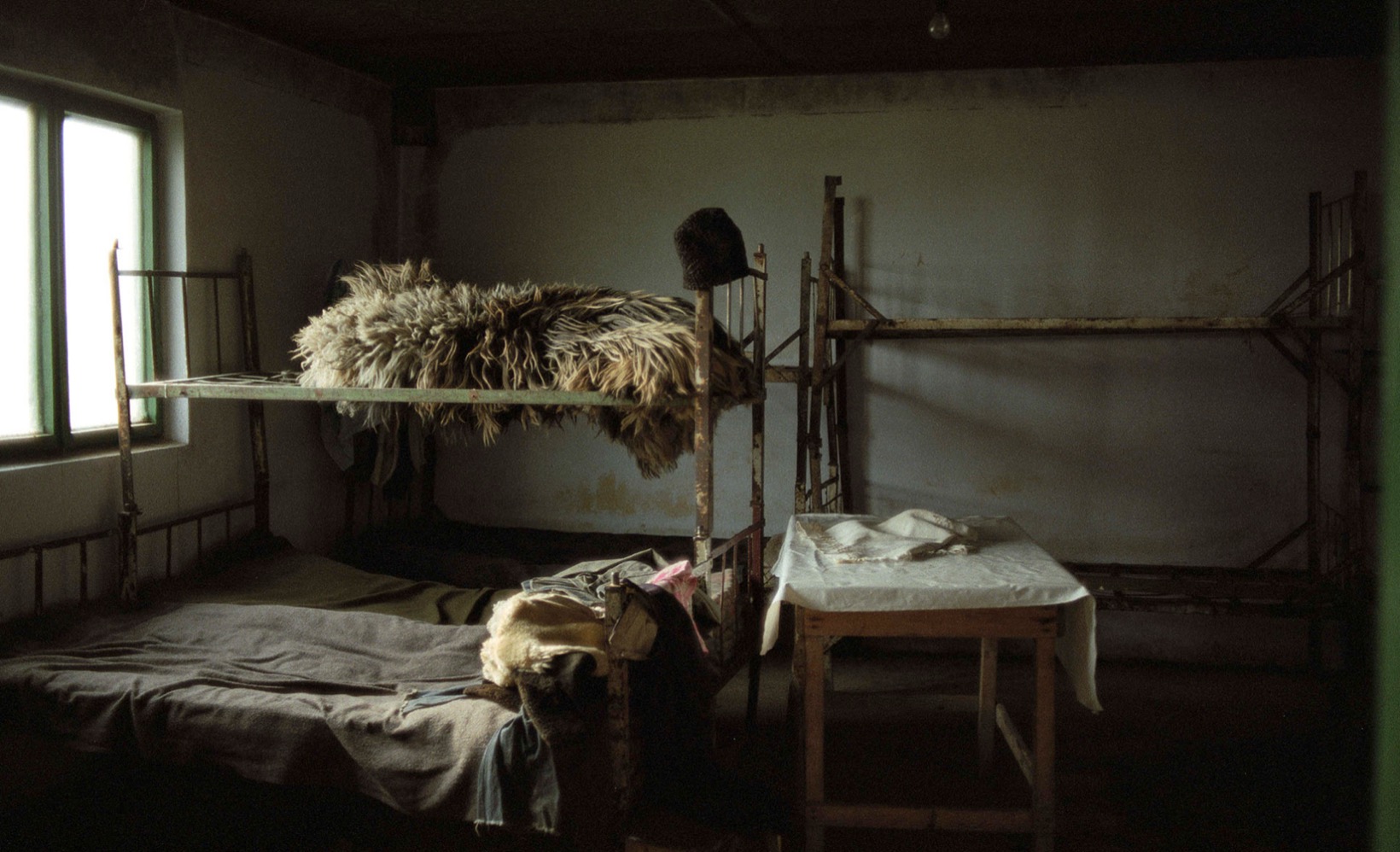
... And The Moldavian One
Video, 2008, 31 min. 48 sec., HD, 16:9.
”...şi cel moldovean ” / “...And the Moldavian One”
The subject of the movie “...şi cel moldovean” / “...and the Moldavian one” seems to be the Moldavian shepherd, who keeps practicing his craft, passed on from father to son, today as always, even if he is forced to throw the wool away or encounters difficulties in selling his cheese. It is conceived as a fictional dialogue taking place over the territorial frontier separating Romania (more precisely, the region called Moldavia) from the Moldavian Republic, two countries severed by the river Prut and by history. It is not only the language that remained unchanged; many of the villages situated on the opposite banks of the Prut bear the same name, and the cheese is made following the same recipe. I chose the motif of the shepherd for its legendary connotation in the Romanian culture, as well as for the fact that this traditional form of sheepherding has no chance of surviving in the European Community. In my movie, the historical context is shaped starting from the accounts of the people living on the banks of the river Prut, from stories lived by themselves and by their ancestors. When I chose this subject, my intention was not solely to reveal an anachronism of our days: I was also trying to describe, using archaic images and multiple angles, the economical, social and historical context of the present.
